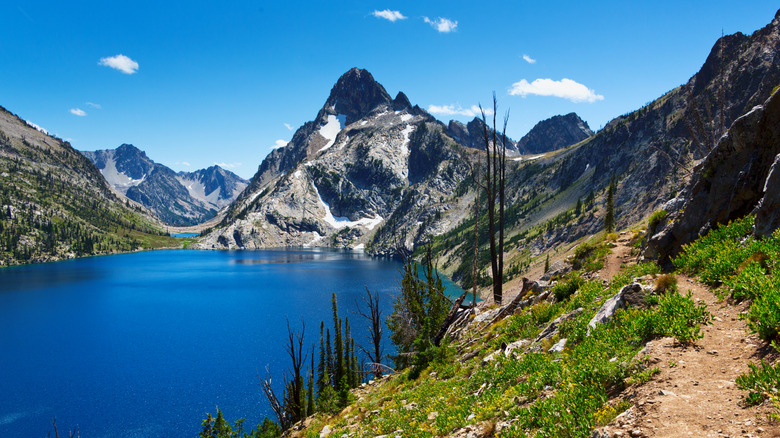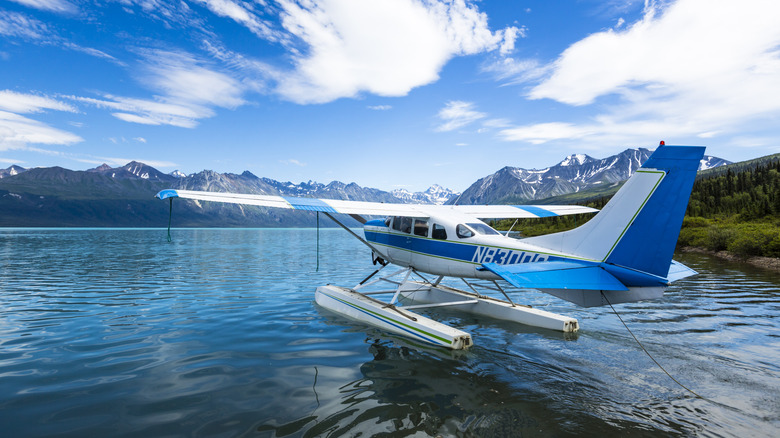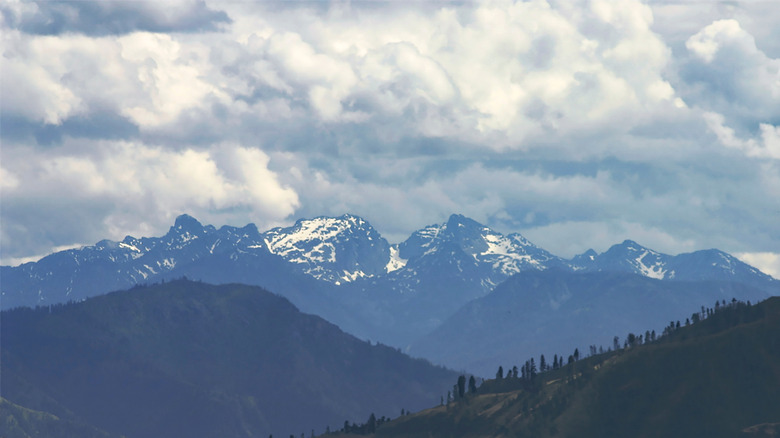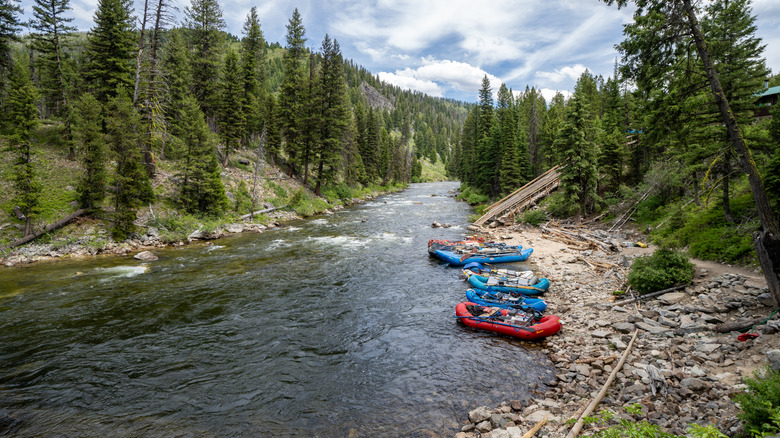Lush Idaho Mountains Dominate One Of America's Largest Federally Designated Wilderness Areas
When the term "American wilderness" is brought up in conversation, it is safe to assume that many minds drift to places like the unbelievably beautiful, but barely-visited Lake Clark National Park in Alaska. However, there are some places in the Lower 48 where you can still find large swaths of pristine wilderness. Case in point: Idaho's Frank Church-River of No Return Wilderness, one of the largest federally designated wilderness in the contiguous United States.
Established by the U.S. Congress in 1980 with the help of Idaho U.S. Senator Frank Church, the Frank Church-River of No Return Wilderness, also known as "The Frank," encompasses 2.3 million acres of lush Idaho mountains, waters, and woods. The Salmon River Mountains create a landscape of craggy peaks, deep green forests, and the kind of mighty white water rivers that thrill seekers live for.
While this wilderness is a pure sportsman's paradise, as it is managed by the U.S. Forest Service, there are important rules and regulations visitors need to be aware of. No mechanized or motorized vehicles are allowed in the park, including bicycles, ATVs, and drones. Hang gliding is also prohibited so as not to disrupt the views. Hunting, fishing, and rafting are allowed within state and forest regulations. It is worth noting, for solo travelers, that this wilderness is not for the inexperienced. Unlike Idaho getaways with plenty of nearby lodging like Lake Pend Oreille, The Frank is far from any town or cell tower. Out here, you really are alone.
How to get to Idaho's The Frank
Being a wilderness, you could hardly expect the Frank Church-River of No Return Wilderness to be simple to access. Due to its status as a preserved wilderness, there are no public roads that lead into The Frank. So, from Idaho's foodie capital at Boise, you'll have to drive to one of the four central Idaho towns — Grangeville, McCall, Salmon, and Challis — that are nearby The Frank in order to access it. The closest of them, McCall, is a moderate 2.5-hour drive away, while the next closest, Grangeville, nearly doubles that time. If you're not flying into Boise Airport, all four towns have their own municipal or county airports.
From either of these checkpoints, you can access the wilderness on foot, horseback, by boat, or via plane. Small, privately chartered planes are allowed to fly into one of the established airstrips in The Frank, while float planes and jet boats are also allowed to land on the Salmon River or Middle Fork.
While there are many outdoor lovers who have the experience and equipment to tackle The Frank on their own, we'd recommend using a certified guide or outfitter for any white water, packing, hunting, or fishing adventures. Frank Church Wilderness Outfitters is a premier guide service for the area, offering fishing excursions, bear and predator hunts, backcountry horse riding tours, and bighorn sheep viewing tours. You can also contact the Idaho Outfitters and Guides Association for more info.
Safely explore millions of acres of mountainous wilderness
If you decide to fly into The Frank, you'll be met with one of the most stunning sights in the United States. What appears to be waves of unending mountains stretch out before you. These are the Salmon River Mountains, and they are the dominant feature of this wilderness. Their rocky peaks form dramatic sight lines against a landscape teeming with the most diverse flora and wildlife in the Gem State.
The mountains and forest are home to a range of different megafauna. Black bears and grizzly bears are common, as are mountain goats, bighorn sheep, moose, elk, and deer. Birders will thrill at the sight of the native bald eagles, osprey, red-tailed hawks, owls, cranes, herons, and innumerable songbirds that fill up the wilderness. As always, stay a good distance away when viewing wildlife.
The Frank is not for the faint of heart when it comes to exploration. The Forest Services recommends carrying a handsaw with you to remove any downed trees blocking trails. Steep elevation gains and loose ground make for challenging hikes. A small network of Forest Service Roads leads to trails like Langer Lake Trail. This is one of the more approachable trails in the wilderness at 7.6 miles long. Be sure to follow "Leave No Trace" principles and bring the appropriate gear and clothing. And, if possible, always check the trail condition report before you leave to go on any hike.
Ride, fish, and see history on the River of No Return
Long before it became established as a wilderness, the main branch of the Salmon River was nicknamed "The River of No Return." Before jet boats could make the trip upstream with ease, there was only one direction rafters could go: down. The rapids made it impossible for man-powered boats to return upstream. White water rafting is still a huge part of The Frank's draw. The Salmon and Middle Fork offer some of the best opportunities to white water raft in the nation. The Middle Fork is 105 miles of free-flowing river with amazing, world-class rapids.
The U.S. Forest Service manages the rafting through an efficient lottery system. Party sizes are controlled, which keeps the river from being overrun by numerous outfitters. Both branches of the river take explorers past over a century of history. Some of the original homesteads in this area, along with the gravestones of their owners, can be seen from the river.
And, of course, no trip to The Frank would be complete without some fishing. Steelhead, bull and rainbow trout, and plenty of salmon make for exciting angling along the Salmon and Middle Fork. Just remember to purchase an Idaho fishing license before you cast. If you love adventure and value an enormous, virtually undisturbed wilderness, The Frank is an Idaho destination you won't want to pass up.



